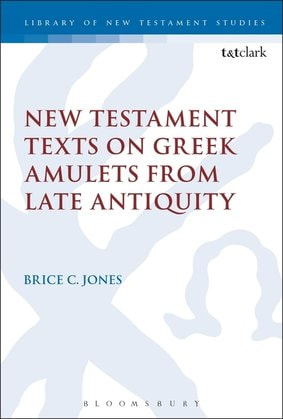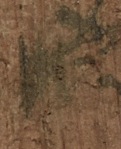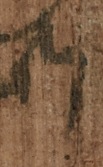|
I am just about through editing an interesting 1st-2nd cent. CE Greek documentary papyrus, but I am having trouble with the beginning of the very last line. I took to Facebook but since no one replied there I thought I would try here to see if anyone had an idea about what is written: This papyrus is written in a semi-cursive script and is fairly easy to read. One of the difficulties with this line is the smudge a few letters in: I cannot quite make out this letter. It is not a kappa, because in this papyrus kappa has a large, prominent hook on the end of its vertical. There appears to be a horizontal stroke atop the letter in question (somewhat offset), which may indicate an abbreviation. The first letter of this line is a typical cursive epsilon, and I am confident that, given the rules of word division (i.e., a word at the end of a line is divided after a vowel, except in the case of double consonants), this is the beginning of a new word. The next letter resembles mu but it is far more acute than other occurrences of the letter elsewhere in the papyrus. There is a ligature right before the smudged letter(s), and that is ει, although the iota does not descend quite as low as others in the papyrus: What comes after the smudged letter is something like επ.οι. I am not sure if this is connected with the smudged letter but it is certainly not connected with the following word, which is clear: This is a form of ἐμποδίζω ("hinder"), which is fairly common in the papyri (e.g. P.Oxy. VI 890, P.Tebt. I 41, etc.). Let me know what you think. I would be grateful for your thoughts on the unclear readings. The letter is interesting and I look forward to publishing it. It mentions sickness, a house, money, lack of repayment, a group of people who "do not have clothes," and other features. Thonis and Diogenes are named and Diogenes is quoted by the sender.
1 Comment
Robert Kraft
link
10/24/2013 05:48:08 am
Could what you read as EI possibly be SI, followed by a Ptolemaic format N with a high right stroke (EMESIN)? Since I can't see the letter shapes in the rest of the piece, I can't test whether the writer used those shapes elsewhere. Then maybe EPWI next? (That P might be an N, and the EP even EU, depending on comparative uses) -- the W (or whatever) is strange, in any event.
Reply
Your comment will be posted after it is approved.
Leave a Reply. |

Available at Amazon!
Archives
June 2020
Categories
All
|



